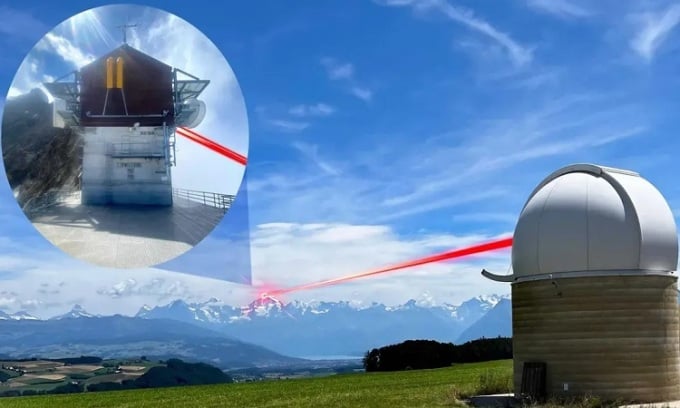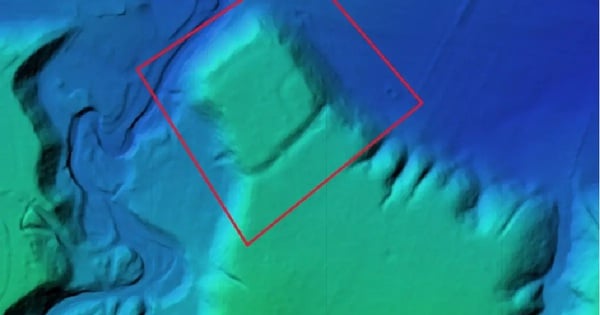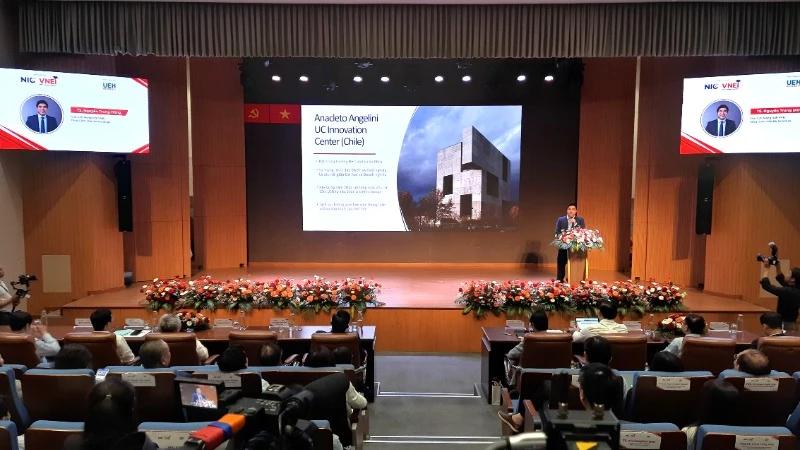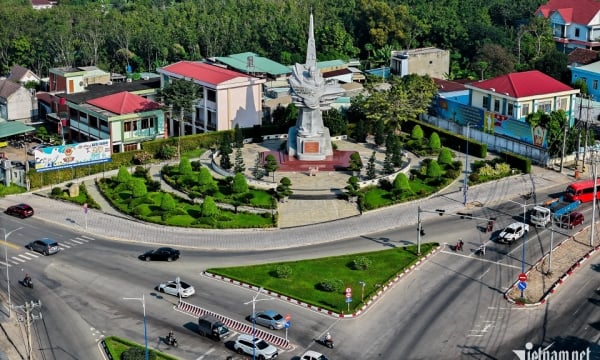Switzerland ETH Zurich research team used laser beams to transmit optical data over the 53 km distance between the mountain top and the city of Bern.

Laser beam data transmission experiment at ETH Zurich. Photo: ETH Zurich
Researchers at ETH Zurich, in collaboration with Thales Alenia Space and the French National Agency for Aeronautics and Space Research (ONERA), have successfully carried out an optical data transmission over the air using laser technology, Innovation Origins reported on June 22. The experiment, conducted over a distance of 53 km between the Jungfraujoch mountain peak and Bern, Switzerland, faced many challenges such as air turbulence and thermal phenomena.
Using a microelectromechanical systems (MEMS) chip with 97 adjustable mirrors, the team corrected the error and achieved a bandwidth of one terabit per second (equivalent to 1,000 gigabits per second). The system can scale up to 40 terabits per second using standard technology, opening up the possibility of high-speed, cost-effective Internet connectivity via a constellation of near-Earth satellites.
As the laser beam travels through dense air near the ground, it faces a number of factors that affect the movement of the light wave and the transmission of data. The biggest challenge the researchers tackled was the erratic turbulence of air particles over snow-capped mountains, the water surface of Lake Thun, crowded megacities and Aare planes, which introduced errors into the transmitted data. In addition, thermal scintillation disrupts the uniformity of the light movement, which can be seen with the naked eye on a hot summer day.
Project partner ONERA deployed MEMS to overcome this obstacle. The mirrors correct the phase shift of the laser beam based on the intersecting surface along the slope at a rate of 1,500 times per second.
By overcoming the technical limitations of the laser system, the ETH Zurich team was able to transmit more information per unit of time than the radio technology used for satellite Internet connections. The new technology has the potential to have a major impact on the global Internet infrastructure, especially in remote areas. Since the experimental system can easily be scaled up to 40 channels and 40 terabits per second, it is a promising alternative to today's deep-sea cables.
An Khang (According to Innovation Origins )
Source link





![[Photo] Overcoming all difficulties, speeding up construction progress of Hoa Binh Hydropower Plant Expansion Project](https://vstatic.vietnam.vn/vietnam/resource/IMAGE/2025/4/12/bff04b551e98484c84d74c8faa3526e0)

![[Photo] Closing of the 11th Conference of the 13th Central Committee of the Communist Party of Vietnam](https://vstatic.vietnam.vn/vietnam/resource/IMAGE/2025/4/12/114b57fe6e9b4814a5ddfacf6dfe5b7f)

























































































Comment (0)